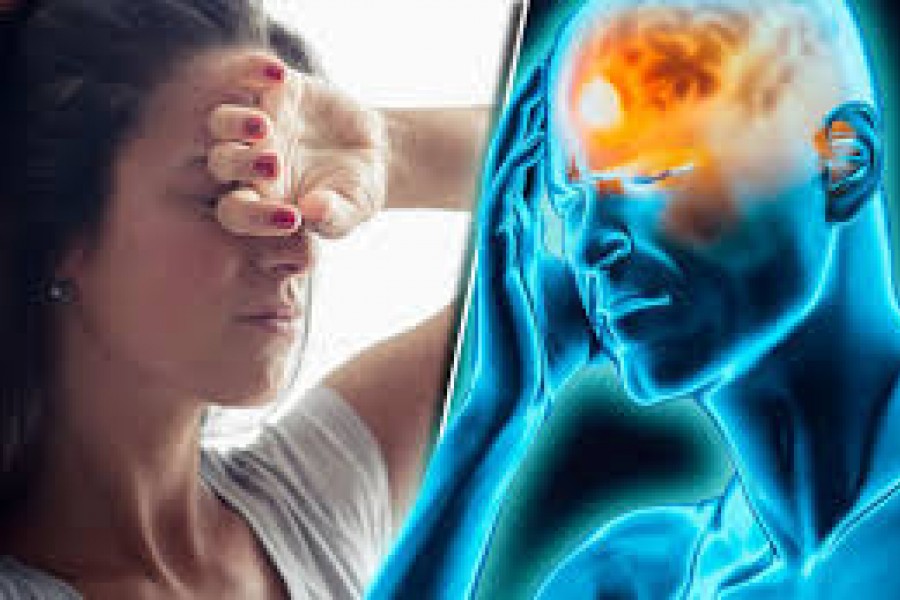Blog: My Migraine Journey
People talk about migraine headaches all the time. We throw around the phrase “a killer headache, “or a “splitting headache”. We often joke that the day is going to be so bad that I know I will need Excedrin. But what is a Migraine and how is it different from a regular headache?
My Migraines started when I was just a young child. I was young enough that when they first started, I did not have the vocabulary to express what was happening to me. I just seemed to have a lot of stomach flu episodes. As many of you know, I grew up with a father who is a well-known Pediatrician in the area. It wasn’t until one day I asked him during a stomach flu episode “how come whenever I get stomach flu, I get funny lights in front of my eyes and my head hurts, and then I vomit?” In Medicine the history is everything. My story is the classic example of a Migraine headache with an aura. The severe headache is preceded by a visual disturbance or an “aura” that typically lasts about 15 minutes. If you know someone who has Migraine headaches, she/he will tell you that the aura is often associated with a sense of dread. I start with the abnormal visual symptoms, and this sense of terror as I know the cascade of symptoms is about to start. The typical aura is a “scintillating scotoma” or a flashing series of lights. Mine look like a series of shimmering prisms in the shape of a horseshoe or a letter C. The aura can be visual, or auditory. Some patients will have an unusual smell. The aura is a heightened sensory abnormality. It will typically last for about 15-20 minutes. As it subsides, it is replaced by a severe headache that is incapacitating. That is one of the differentiating features between a Migraine and a regular headache. I must lay down in a dark room. Patients often need to lay down in a dark, quiet room, as light and sound are especially bothersome during a Migraine. The headache portion of a Migraine can last several hours, and in the case of a classic Migraine is then followed by nausea with or without vomiting. I always had nausea and vomiting with my Migraine headaches until the advent of recent medications. As the vomiting subsided, the episode would pass. I would be left with an ache in my head. It was like the sensation of having been punched in the arm multiple times. It is like a bruised sensation that lasts another day. The next day was also scary because of the fear of a recurrent Migraine. That happens to many Migraine patients. It is analogous to a fire that is almost out, but there is still some embers that if the conditions are right can blossom into another attack.
Migraine sufferers often have a trigger for the headache. Some can be food (classic foods are red wine, aged cheese, and caffeine containing drinks). Other triggers can be difficult to control like sleep deprivation or too much sleep. In women, their menstrual cycle can be closely tied to their migraines with the hormonal fluctuations. Many migraine sufferers will tell you that certain weather conditions especially a rainstorm seem to trigger migraines.
For those of us afflicted with Migraines we are lucky to live in an era with more treatment modalities then ever before. I like to break the treatment down into two major classes. There are preventative or maintenance medications that some people take to prevent Migraines, and there are abortive treatments to take to try to stop the Migraine attack.
How do you know what is the best option for you? For most of my life, I just used medicine when I had a Migraine. Something changed in the mid to late 1990’s. When I left my office throwing up on the side of the building two days in a row, I realized that I needed help. I met with my Neurologist and begged for daily preventative medicine. I had always been hesitant to take a daily medicine, but nothing is worse then vomiting, and doing it two days in a row pushed me over the edge.
There are many medication options for the acute treatment of Migraine. They are advertised on TV all the time. They are safe and effective. It is important to use these medicines and other treatments judiciously as over-use can lead to rebound headaches. (The medicines are effective so we reach for them quickly and can sometimes use them too often leading to a rebound headache from excess use). The treatment balance can be delicate. However, it is possible. Sometimes, we as your Internist can manage routine cases, and some patients will need help from a neurologist. Don’t give up, you can get better.
By Steve Lasin, MD
February 7, 2022

